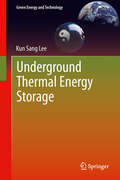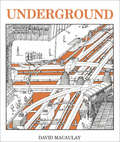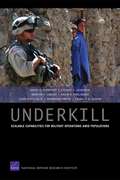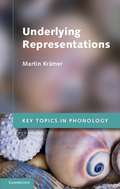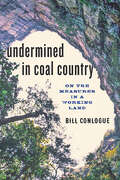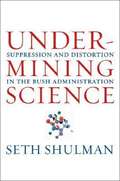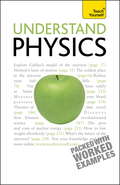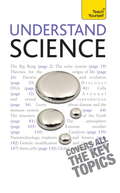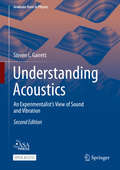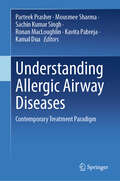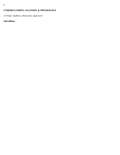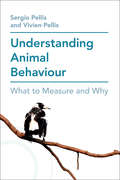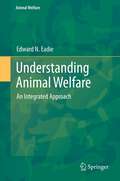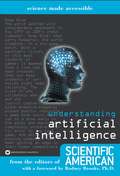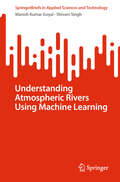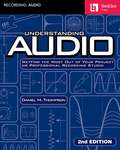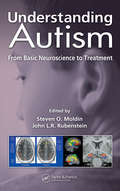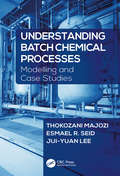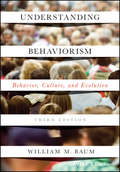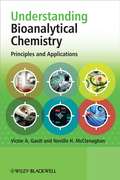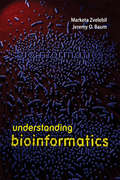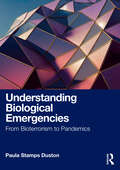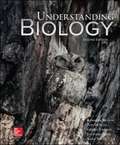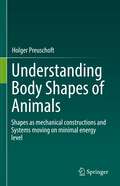- Table View
- List View
Underground Thermal Energy Storage
by Kun Sang LeeUnderground thermal energy storage (UTES) provide us with a flexible tool to combat global warming through conserving energy while utilizing natural renewable energy resources. Primarily, they act as a buffer to balance fluctuations in supply and demand of low temperature thermal energy. Underground Thermal Energy Storage provides an comprehensive introduction to the extensively-used energy storage method. Underground Thermal Energy Storage gives a general overview of UTES from basic concepts and classifications to operation regimes. As well as discussing general procedures for design and construction, thermo-hydro geological modeling of UTES systems is explained. Finally, current real life data and statistics are include to summarize major global developments in UTES over the past decades. The concise style and thorough coverage makes Underground Thermal Energy Storage a solid introduction for students, engineers and geologists alike.
Underground: El Subsuelo
by David MacaulayDavid Macaulay takes us on a visual journey through a city's various support systems by exposing a typical section of the underground network and explaining how it works. We see a network of walls, columns, cables, pipes and tunnels required to satisfy the basic needs of a city's inhabitants.
Underkill: Scalable Capabilities for Military Operations amid Populations
by David C. Gompert David R. Frelinger Martin C. Libicki Stuart E. Johnson John GordonThe U.S. military is ill-equipped to strike at extremists who hide in populations. Using deadly force against them can harm and alienate the very people whose cooperation U.S. forces are trying to earn. To solve this problem, a new RAND study proposes a "continuum of force"--a suite of capabilities that includes sound, light, lasers, cell phones, and video cameras. These technologies are available but have received insufficient attention.
Underlying Representations
by Martin KrämerAt the heart of generative phonology lies the assumption that the sounds of every language have abstract underlying representations, which undergo various changes in order to generate the 'surface' representations, that is, the sounds we actually pronounce. The existence, status and form of underlying representations have been hotly debated in phonological research since the introduction of the phoneme in the nineteenth century. This book provides a comprehensive overview of theories of the mental representation of the sounds of language. How does the mind store and process phonological representations? Krämer surveys the development of the concept of underlying representation over the last 100 years or so within the field of generative phonology. He considers phonological patterns, psycho-linguistic experiments, statistical generalisations over data corpora and phenomena such as hypercorrection. The book offers a new understanding of contrastive features and proposes a modification of the optimality-theoretic approach to the generation of underlying representations.
Undermined in Coal Country: On the Measures in a Working Land
by Bill ConlogueLiving in a landscape dominated by mining.Deep mining ended decades ago in Pennsylvania’s Lackawanna Valley. The barons who made their fortunes have moved on. Low wages and high unemployment haunt the area, and the people left behind wonder whether to stay or seek their fortunes elsewhere.Bill Conlogue explores how two overlapping coal country landscapes—Scranton, Pennsylvania, and Marywood University—have coped with the devastating aftermath of mining. Examining the far-reaching environmental effects of mining, this beautifully written book asks bigger questions about what it means to influence a landscape to this extent—and then to live in it. In prose rivaling that of Annie Dillard and John McPhee, Conlogue argues that, if we are serious about solving environmental problems, if we are serious about knowing where we are and what happens there, we need to attend closely to all places—that is, to attend to the world in a cold, dark, and disorienting universe. Unearthing new ways of thinking about place, pedagogy, and the environment, this meditative text reveals that place is inherently unstable.
Undermining Science: Suppression and Distortion in the Bush Administration
by Seth ShulmanIt is the first book to focus exclusively on how this explosive issue has played out during the Presidency of George W. Bush and the first to comprehensively document his administration's abuses of science.
Understand Physics: Teach Yourself
by Jim BreithauptUnderstand Physics gives you a solid understanding of the key skills and ideas that run through the subject. You will explore the important concepts of force and motion, electricity, light, molecules, matter and space and discover the frontiers of physics. With numerous questions, answers and worked examples throughout, you will feel confident in approaching the science and applying your knowledge.NOT GOT MUCH TIME?One, five and ten-minute introductions to key principles to get you started.AUTHOR INSIGHTSLots of instant help with common problems and quick tips for success, based on the author's many years of experience.TEST YOURSELFTests in the book and online to keep track of your progress.EXTEND YOUR KNOWLEDGEExtra online articles at www.teachyourself.com to give you a richer understanding of physics.FIVE THINGS TO REMEMBERQuick refreshers to help you remember the key facts.TRY THISInnovative exercises illustrate what you've learnt and how to use it.
Understand Physics: Teach Yourself (Ty Science Ser.)
by Jim BreithauptUnderstand Physics gives you a solid understanding of the key skills and ideas that run through the subject. You will explore the important concepts of force and motion, electricity, light, molecules, matter and space and discover the frontiers of physics. With numerous questions, answers and worked examples throughout, you will feel confident in approaching the science and applying your knowledge.NOT GOT MUCH TIME?One, five and ten-minute introductions to key principles to get you started.AUTHOR INSIGHTSLots of instant help with common problems and quick tips for success, based on the author's many years of experience.TEST YOURSELFTests in the book and online to keep track of your progress.EXTEND YOUR KNOWLEDGEExtra online articles at www.teachyourself.com to give you a richer understanding of physics.FIVE THINGS TO REMEMBERQuick refreshers to help you remember the key facts.TRY THISInnovative exercises illustrate what you've learnt and how to use it.
Understand Science: Teach Yourself
by Jon EvansScience is a vast subject and our understanding of the way the world works is growing all the time. No book could hope to include everythingt that science has discovered, but this book includes all of the essential facts about all the really key areas. Broken down into short, easy-to-digest sections it covers everything from evolution and cell biology to star formation and plate tectonics. Including sections on what technology may allow us to do in the future, and even looking at when science has gone bad, Understand Science will change the way you see the world around you.
Understanding Acoustics: An Experimentalist’s View of Sound and Vibration (Graduate Texts in Physics)
by Steven L. GarrettThis open access textbook, like Rayleigh’s classic Theory of Sound, focuses on experiments and on approximation techniques rather than mathematical rigor. The second edition has benefited from comments and corrections provided by many acousticians, in particular those who have used the first edition in undergraduate and graduate courses. For example, phasor notation has been added to clearly distinguish complex variables, and there is a new section on radiation from an unbaffled piston. Drawing on over 40 years of teaching experience at UCLA, the Naval Postgraduate School, and Penn State, the author presents a uniform methodology, based on hydrodynamic fundamentals for analysis of lumped-element systems and wave propagation that can accommodate dissipative mechanisms and geometrically-complex media. Five chapters on vibration and elastic waves highlight modern applications, including viscoelasticity and resonance techniques for measurement of elastic moduli, while introducing analytical techniques and approximation strategies that are revisited in nine subsequent chapters describing all aspects of generation, transmission, scattering, and reception of waves in fluids. Problems integrate multiple concepts, and several include experimental data to provide experience in choosing optimal strategies for extraction of experimental results and their uncertainties. Fundamental physical principles that do not ordinarily appear in other acoustics textbooks, like adiabatic invariance, similitude, the Kramers-Kronig relations, and the equipartition theorem, are shown to provide independent tests of results obtained from numerical solutions, commercial software, and simulations. Thanks to the Veneklasen Research Foundation, this popular textbook is now open access, making the e-book available for free download worldwide. Provides graduate-level treatment of acoustics and vibration suitable for use in courses, for self-study, and as a referenceHighlights fundamental physical principles that can provide independent tests of the validity of numerical solutions, commercial software, and computer simulationsDemonstrates approximation techniques that greatly simplify the mathematics without a substantial decrease in accuracyIncorporates a hydrodynamic approach to the acoustics of sound in fluids that provides a uniform methodology for analysis of lumped-element systems and wave propagationEmphasizes actual applications as examples of topics explained in the textIncludes realistic end-of-chapter problems, some including experimental data, as well as a Solutions Manual for instructors.Features “Talk Like an Acoustician“ boxes to highlight key terms introduced in the text.
Understanding Allergic Airway Diseases: Contemporary Treatment Paradigm
by Kamal Dua Ronan MacLoughlin Kavita Pabreja Sachin Kumar Singh Parteek Prasher Mousmee SharmaThe book explores the intersection of nanotechnology and allergic airway diseases. With a focus on diagnosis and management, each chapter delves into specific areas of interest. Beginning with an introduction to the diseases, the book progresses to uncover the pathophysiology and immunology underlying allergic airway diseases. The epidemiology chapter provides insights into the prevalence and impact of these conditions. A significant portion of the book is dedicated to nanotechnology applications, with chapters on metal and metal oxide nanoparticles, nanomicelles, carbon nanotubes, liposomes, polymeric nanoparticles, solid lipid nanoparticles, dendrimers, nanofibers, and quantum dots. These chapters delve into the potential of these nanomaterials in managing allergic airway diseases, highlighting their unique properties, and promising therapeutic approaches. Finally, the book concludes with a chapter on future directions, exploring emerging trends and potential advancements in the field. This book will be a valuable resource for academics, caregivers, researchers, and industry professionals working in the field of airway allergic diseases. It includes translational and clinical researchers, under-graduates and postgraduates (Masters), PhDs, and post-doctoral researchers of various disciplines, including pharmaceutical sciences, biotechnology, immunology, and medical and health sciences.
Understanding Anatomy & Physiology: A Visual, Auditory, Interactive Approach
by Gale Sloan ThompsonHow do you learn A&P best? Whatever your learning style. . . by looking, listening, or doing, or a little bit of each. . . the 2nd Edition of this innovative, multiplatform approach to anatomy & physiology is designed just for you. Tackle a tough subject in bite-sized pieces. A seeming huge volume of information is organized into manageable sections to make complex concepts easy to understand and remember. You begin with an overview of the body, including its chemical and cellular structures, then progress to one-of-a-kind portrayals of each body system, grouped by function. A wealth of full-color illustrations, figures, sidebars, helpful hints, and easy-to-read descriptions make information crystal clear. Each unique page spread provides an entire unit of understanding, breaking down complex concepts into easy-to-grasp sections. Click here for a preview of the text & the accompanying resources. See. Listen. Do. Discover beyond the book with instructor and student resources online at DavisPlus, including your Davis Digital Version, full-color, narrated animations, interactive exercises, flash cards, and learning objectives/outcomes. Also available: Workbook to Accompany Understanding Anatomy & Physiology, 2nd Edition "The integration of graphics and text is very engaging for learners. Thompson silences the academic distractions found in traditional A&P textbooks and emphasizes all the 'take away points' in a concise and informative manner. The task of learning A&P is now less threatening. " --Jason Johnson, Saskatchewan Institute of Applied Science and Technology "My students absolutely love the Thompson A&P book. It is concise and makes learning the material seem less daunting. It really hits all learning styles with the pictures, videos, text and workbook. I have seen a significant increase in student success since we implemented this book!" --Shayna Turner RN, MS, Isabella Graham Hart School of Practical Nursing "The numerous graphics are vivid and relevant allowing the student to focus on the concept rather than multiple paragraphs of reading. The "Life Lesson" inserts further engage the student by placing covered concepts into real-world situations. Understanding Anatomy & Physiology is both instructor and student friendly. " -- Nanette Mosser, RMA, BA-HCM, MedQuest College
Understanding Animal Behaviour: What to Measure and Why
by Sergio Pellis Vivien PellisAll students and researchers of behaviour – from those observing freely-behaving animals in the field to those conducting more controlled laboratory studies – face the problem of deciding what exactly to measure. Without a scientific framework on which to base them, however, such decisions are often unsystematic and inconsistent. Providing a clear and defined starting point for any behavioural study, this is the first book to make available a set of principles for how to study the organisation of behaviour and, in turn, for how to use those insights to select what to measure. The authors provide enough theory to allow the reader to understand the derivation of the principles, and draw on numerous examples to demonstrate clearly how the principles can be applied. By providing a systematic framework for selecting what behaviour to measure, the book lays the foundations for a more scientific approach for the study of behaviour.
Understanding Animal Welfare
by Edward N. EadieThis book examines the contents, influence, and potential of a personal selection of modern books published over the last fifty years that have been relevant to improving welfare. The works selected comprise three earlier classics that mainly deal with animal experimentation and intensive farming, as well as five that concentrate on specific subject areas, namely history, science, applied ethics, politics and law, that are important to protecting the welfare of animals against suffering inflicted by humans. The books are arranged in the order of their publication date, and for each one a few related works are also mentioned or discussed. This collection provides a broad understanding of animal protection issues, and provides the necessary basis for an informed and comprehensive approach to improving the welfare of animals. The books selected have been influential and they have the potential to improve animal welfare in the future.
Understanding Artificial Intelligence
by Editors of Scientific AmericanEssays from the world's experts in AI.
Understanding Atmospheric Rivers Using Machine Learning (SpringerBriefs in Applied Sciences and Technology)
by Manish Kumar Goyal Shivam SinghThis book delves into the characterization, impacts, drivers, and predictability of atmospheric rivers (AR). It begins with the historical background and mechanisms governing AR formation, giving insights into the global and regional perspectives of ARs, observing their varying manifestations across different geographical contexts. The book explores the key characteristics of ARs, from their frequency and duration to intensity, unraveling the intricate relationship between atmospheric rivers and precipitation. The book also focus on the intersection of ARs with large-scale climate oscillations, such as El Niño and La Niña events, the North Atlantic Oscillation (NAO), and the Pacific Decadal Oscillation (PDO). The chapters help understand how these climate phenomena influence AR behavior, offering a nuanced perspective on climate modeling and prediction. The book also covers artificial intelligence (AI) applications, from pattern recognition to prediction modeling and early warning systems. A case study on AR prediction using deep learning models exemplifies the practical applications of AI in this domain. The book culminates by underscoring the interdisciplinary nature of AR research and the synergy between atmospheric science, climatology, and artificial intelligence
Understanding Audio
by Daniel M. Thompson(Berklee Guide). Understanding Audio explores the fundamentals of audio and acoustics that impact every stage of the music recording process. Whether you are a musician setting up your first Pro Tools project studio, or you are a seasoned recording engineer or producer eager to find a reference that fills in the gaps in your understanding of audio, this book is for you. Understanding Audio will enable you to develop a thorough understanding of the underlying principles of sound, and take some of the mystery and guesswork out of how equipment setup affects the quality of your recordings. Projects at the end of each chapter will assist you in applying these principles to your own recording environment. Learn about: * Basic and advanced audio theory * Cables and studio wiring * Recording studio and console signal flow * Digital and analog audio * Studio and listening room acoustics * Psychoacoustics * "In the Studio" insights, relating audio principles to real recording situations
Understanding Autism: From Basic Neuroscience to Treatment
by Steven O. Moldin John L.R. RubensteinTaking an all-inclusive look at the subject, Understanding Autism: From Basic Neuroscience to Treatment reviews state-of-the-art research on the diagnosis, treatment, and prevention of autism. The book addresses potential mechanisms that may underlie the development of autism and the neural systems that are likely to be affected by these molecular,
Understanding Batch Chemical Processes: Modelling and Case Studies
by Thokozani Majozi Esmael R. Seid Jui-Yuan LeeBatch chemical processes, so often employed in the pharmaceutical and agrochemical fields, differ significantly from standard continuous operations in the emphasis upon time as a critical factor in their synthesis and design. With this inclusive guide to batch chemical processes, the author introduces the reader to key aspects in mathematical modeling of batch processes and presents techniques to overcome the computational complexity in order to yield models that are solvable in near real-time. This book demonstrates how batch processes can be analyzed, synthesized, and designed optimally using proven mathematical formulations. The text effectively demonstrates how water and energy aspects can be incorporated within the scheduling framework that seeks to capture the essence of time. It presents real-life case studies where mathematical modeling of batch plants has been successfully applied.
Understanding Behaviorism: Behavior, Culture, and Evolution
by William M. BaumUnderstanding Behaviorism is a classic textbook that explains the basis of behavior analysis and its application to human problems in a scholarly but accessible manner. Now in its third edition, the text has been substantially updated to include the latest developments over the last decade in behaviour analysis, evolutionary theory, and cultural evolution theory The only book available that explains behavior analysis and applies it to philosophical and practical problems, written by one of today’s best-known and most highly respected behaviorists Explores ancient concepts such as purpose, language, knowledge, and thought, as well as applying behavioural thinking to contemporary social issues like freedom, democracy, and culture Part of the new evolutionary perspective for understanding individual behavior in general and culture in particular – culminates with practical approaches to improving the lives of all humanity
Understanding Bioanalytical Chemistry
by Victor A. Gault Neville H. Mcclenaghan"The title captures the ethos and content precisely. It brings basic chemistry into real life with examples that illustrate how chemical principals are inherent to bioanalytical procedures, making them accessible to readers with a background in life sciences." -Microbiology Today, July 2009"... a good overview of the basic strategies to tackle the complexity of analysis in biological environments and provides some illustrative examples for a better understanding of the theoretical concepts... provides a fundamental introduction to the tools adopted by life and health scientists in the evolving and exciting new age of "omics" specifically applied to the diagnosis, treatment, cure and prevention of disease..." -Analytical and Bioanalytical Chemistry, October 2009Although chemistry is core to the life and health sciences, it is often viewed as a challenging subject.Conventional textbooks tend to present chemistry in a way that is not always easily accessible to students, particularly those coming from diverse educational backgrounds, who may not have formally studied chemistry before.This prompted the authors to write this particular textbook, taking a new, fresh and innovative approach to teaching and learning of chemistry, focusing on bioanalysis to set knowledge in context. This textbook is primarily targeted to undergraduate life and health science students, but may be a useful resource for practising scientists in a range of disciplines.In this textbook the authors have covered basic principles, terminology and core technologies, which include key modern experimental techniques and equipment used to analyse important biomolecules in diagnostic, industrial and research settings.Written by two authors with a wealth of experience in teaching, research and academic enterprise, this textbook represents an invaluable tool for students and instructors across the diverse range of biological and health science courses.Key Features:Innovative, stand alone teaching and learning resource to enhance delivery of undergraduate chemistry provision to life and health scientists. Develops student knowledge and understanding of core concepts with reference to relevant, real-life, examples. Clearly written and user-friendly, with numerous full colour illustrations, annotated images, diagrams and tables to enhance learning. Incorporates a modern approach to teaching and learning to motivate the reader and encourage student-centred learning. Dr Victor Gault has been named recipient of the Rising Star Award 2009 by the internationally acclaimed European Association for the Study of Diabetes (EASD).
Understanding Bioinformatics
by Jeremy O. Baum Marketa ZvelebilSuitable for advanced undergraduates and postgraduates, Understanding Bioinformatics provides a definitive guide to this vibrant and evolving discipline. The book takes a conceptual approach. It guides the reader from first principles through to an understanding of the computational techniques and the key algorithms. Understanding Bioinformatics is an invaluable companion for students from their first encounter with the subject through to more advanced studies. The book is divided into seven parts, with the opening part introducing the basics of nucleic acids, proteins and databases. Subsequent parts are divided into 'Applications' and 'Theory' Chapters, allowing readers to focus their attention effectively. In each section, the Applications Chapter provides a fast and straightforward route to understanding the main concepts and 'getting started'. Each of these is then followed by Theory Chapters which give greater detail and present the underlying mathematics. In Part 2, Sequence Alignments, the Applications Chapter shows the reader how to get started on producing and analyzing sequence alignments, and using sequences for database searching, while the next two chapters look closely at the more advanced techniques and the mathematical algorithms involved. Part 3 covers evolutionary processes and shows how bioinformatics can be used to help build phylogenetic trees. Part 4 looks at the characteristics of whole genomes. In Parts 5 and 6 the focus turns to secondary and tertiary structure – predicting structural conformation and analysing structure-function relationships. The last part surveys methods of analyzing data from a set of genes or proteins of an organism and is rounded off with an overview of systems biology.The writing style of Understanding Bioinformatics is notable for its clarity, while the extensive, full-color artwork has been designed to present the key concepts with simplicity and consistency. Each chapter uses mind-maps and flow diagrams to give an overview of the conceptual links within each topic.
Understanding Biological Emergencies: From Bioterrorism to Pandemics
by Paula Stamps DustonThis book investigates the links between the main sources of biological emergencies and presents a comprehensive policy framework that seeks to achieve the ultimate goal of biological security.The work offers a new interdisciplinary approach to analyse the linkages between the three main sources of biological emergencies: intentional attacks, natural zoonotic transmission, and lab accidents. In doing so, the text describes the history of using nature to create a weapon, focusing on dispersal methods. The most important Select Agents for monitoring are described, with a special focus on anthrax and smallpox. The case studies presented include the use of the Biological Weapons Convention (BWC) in Iraq and the 2001 anthrax attack in the US. The policies that created the emergency preparedness system are analysed, and the current system is described in terms of their effectiveness in responding to the COVID-19 pandemic. The book concludes with some ideas and specific suggestions for moving from response to risk reduction and prevention.This book will be of much interest to students of biosecurity studies, public health, public policy, political science and international relations, and to professionals working in the fields of public health, public safety, medicine, nursing, and first responders as well as military personnel.
Understanding Biology
by George Johnson Jonathan Losos Kenneth Mason Susan Singer Tod DuncanA concise and engaging biology text for biology majors, Understanding Biology partnered with Connect emphasizes fundamentals concepts to help students better understand biology and focus on developing scientific skills. <p><p> Condensed chapters are centered on a learning path that serves to connect concepts within a chapter. The learning path begins with learning outcomes, which help students understand the core skills and concepts they should develop. Inquiry and Analysis cases help students build scientific skills, while scaffold end of chapter assessment ensures they not only grasp core concepts, but can also critically analyze and apply what they've learned. "Connecting the Concepts," a synthesis feature that ends every part, helps students understand the connections between biological concepts, thus helping them "see" the big picture.
Understanding Body Shapes of Animals: Shapes as mechanical constructions and Systems moving on minimal energy level
by Holger PreuschoftThis book discusses how and why animals evolved into particular shapes. The book identifies the physical laws which decide over the evolutionary (selective) value of body shape and morphological characters. Comparing the mechanical necessities with morphological details, the author attempts to understand how evolution works, and which sorts of limitations are set by selection.The book explains morphological traits in more biomechanical detail without getting lost in physics, or in methods. Most emphasis is placed on the proximate question, namely the identification of the mechanical stresses which must be sustained by the respective body parts, when they move the body or its parts against resistance.In the first part of the book the focus is on ‘primitive’ animals and later on the emphasis shifts to highly specialized mammals. Readers will learn more about living and fossil animals.A section of the book is dedicated to human evolution but not to produce another evolutionary tree, nor to refine a former one, but to contribute to answering the question: “WHY early humans have developed their particular body shape".
